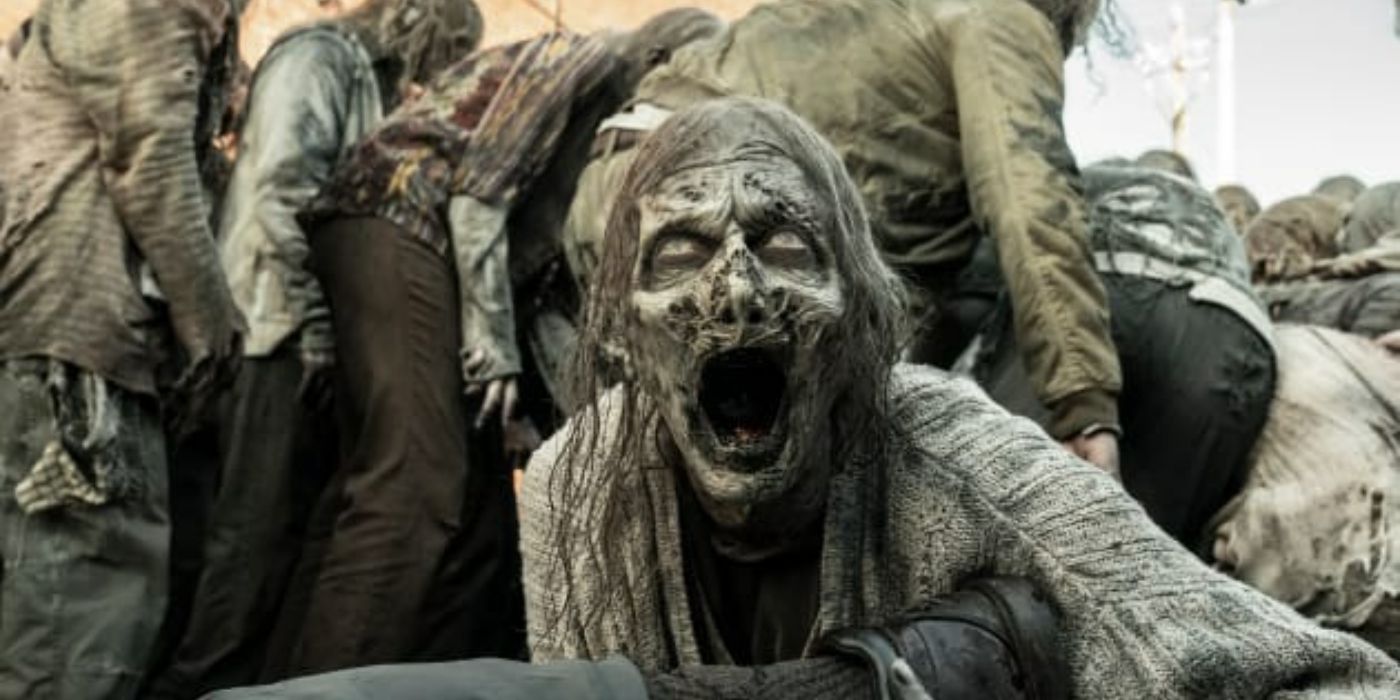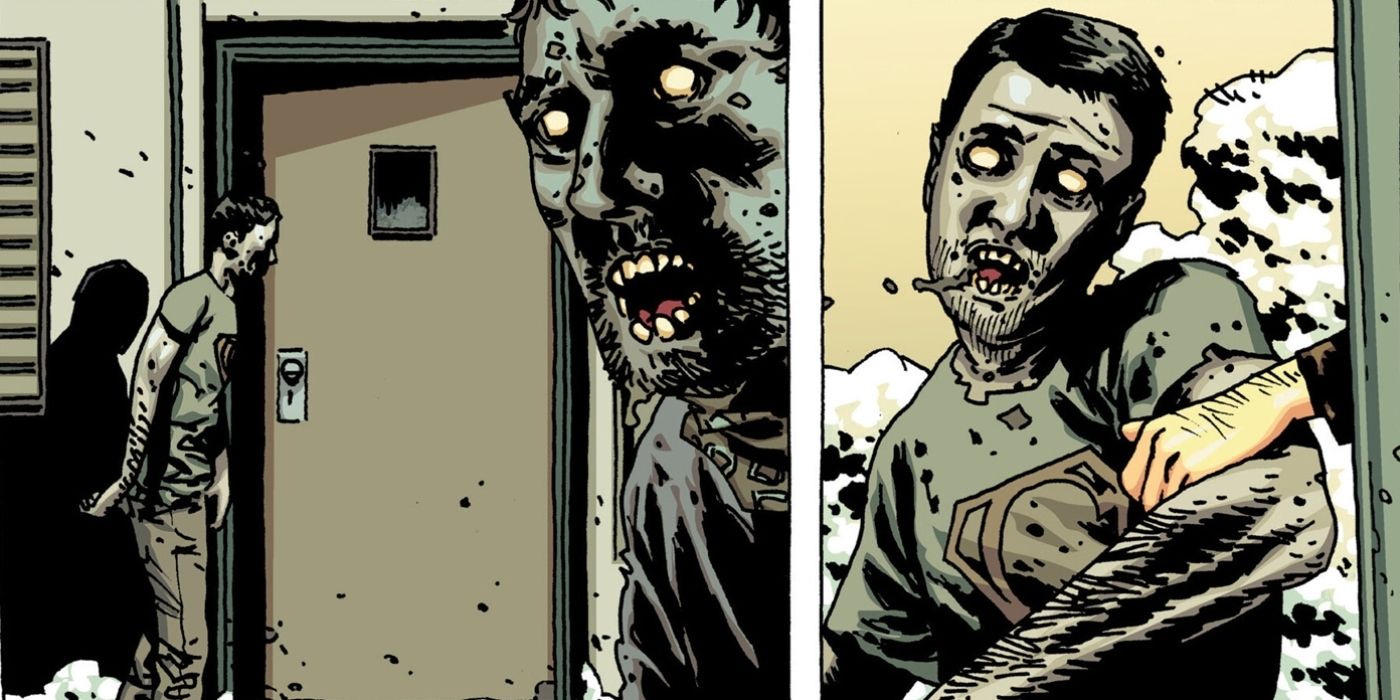Summary
- In the letters page to The Walking Dead #95 – reprinted as part of the Deluxe rerelease of the series – Robert Kirkman explained why some bodies didn't necessarily reanimate as zombies.
- Many fans tended to focus on things like zombie physiology in The Walking Dead , but creator Robert Kirkman continually stressed that the extreme human experience of the story was the important part.
- The Walking Dead's zombies were a way in which to put human characters in the middle of a catastrophe they were totally unprepared for, and in that way, the series was always consistent with its depiction of the undead.

Robert Kirkman, creator of The Walking Dead, once explained why some dead bodies in the comic book series seemingly didn't reanimate – noting that, in line with traditional zombie lore, a death that involved traumatic damage to the brain would not result in that individual returning as one of the hordes of undead.
The Walking Dead Deluxe #95 – written by Robert Kirkman, with art by Charlie Adlard – is a reprint of the original issue, including the original letters page. Published as the early seasons of Walking Dead's TV adaptation were airing, the comic at the time was witnessing an influx of new readers, many of whom asked the same old questions.

Most notably, there was always perennial fan interest in zombie physiology – and while Kirkman was often quick to note this wasn't the priority of the story, he did set the record straight for fans when he could.
Robert Kirkman: Traumatic Brain Damage At The Time Of Death Prevents Reanimation
The Walking Dead Deluxe #95 – Written By Robert Kirkman; Art By Charlie Adlard; Color By Dave McCaig; Lettering By Rus Wooten
Robert Kirkman's answer to the question of how and why zombies reanimate reiterates that the zombie science of The Walking Dead was ancillary to the book's focus on human experience pushed to an unheralded extreme.
Walking Dead readers and TV viewers quickly familiarized themselves with the idea that the way to definitively kill the undead for the second time was to destroy the brain. According to Robert Kirkman, the appearance of non-zombified corpses in the comic – especially early on – was simply an extension of this premise. In the letters page to Walking Dead #95, Kirkman wrote:
Any non-zombie corpse you saw on the highway, either suffered severe brain trauma in a car crash that resulted in that pileup, or had another brain damaging event that killed them.
For fans who might have suspected an inconsistency, this is a reassurance that The Walking Dead's zombies did follow a consistent logic – even if Robert Kirkman wasn't always keen on explaining it to readers in-depth.
Kirkman also went a step further, pointing out that there has always been more going on in the world of The Walking Dead than what readers were privy to. About seemingly inanimate corpses encountered by Rick in early issues of the comic, Kirkman stated:
They could have even been zombies in that car for awhile – until someone came along and killed them.
In any case, Robert Kirkman's answer to the question of how and why zombies reanimate reiterates that the zombie science of The Walking Dead was ancillary to the book's focus on human experience pushed to an unheralded extreme.
The Walking Dead Was A Zombie Comic Where The Zombies Weren't The Priority
A Human Drama At Its Core
For Kirkman, zombies were a mechanism through which to explore the extent of humanity's capacity to respond to a civilization-ending catastrophe.
The Walking Dead Deluxe has offered an opportunity for fans of the franchise to re-live the comic's odyssey of survival, as well as the chance to reflect on what made the series so popular that it transformed from a cult-favorite comic book to a worldwide phenomenon. While the "rules," or the logic behind Walking Dead's zombies were important, they could often distract fans from the core story of human survival that Robert Kirkman crafted over the course of nearly two-hundred issues.
In a way, this is perhaps an issue of the zombie genre at large, and it is one that Robert Kirkman routinely downplayed the importance of. For Kirkman, zombies were a mechanism through which to explore the extent of humanity's capacity to respond to a civilization-ending catastrophe. What this meant was that, as long as the nature of The Walking Dead's zombies maintained an internal consistency, readers could have faith in whatever the author ultimately chose to do with them in the story.



